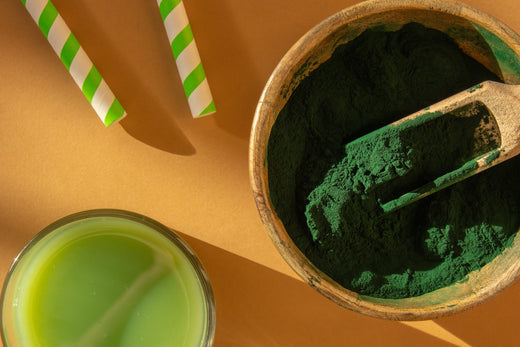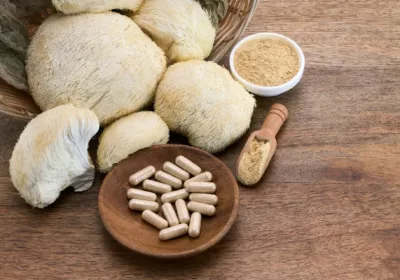
Unlocking the Superfood Secrets: A Comprehensive Guide to Spirulina
Spirulina, or Arthrospira platensis, is not just any blue-green algae; it’s a powerhouse of nutrition with a staggering protein content of up to 70%, making it a beacon of hope for improving health concerns ranging from anemia to metabolic syndrome [1]. Esteemed for its rich supply of nutrients including protein, thiamin, riboflavin, niacin, copper, iron, and a plethora of vitamins and minerals, Spirulina stands out as a versatile supplement. Its potential to influence key health markers such as blood pressure, cholesterol levels, and triglyceride levels is drawing increasing attention, signifying its role as an essential component in the dietary regimes aiming to tackle diabetes and other metabolic conditions [2][3][4].
Embracing Spirulina as part of your diet translates into a vibrant thrust towards enhancing your overall well-being. With Spirulina’s benefits spanning from nutritional to therapeutic realms, it offers an insightful addition to managing cholesterol, combating oxidative stress by reducing lipid peroxidation, and even serving as an ergogenic aid for those seeking to elevate their physical performance. As the guide unfolds, you’ll discover how to incorporate Spirulina into your diet effectively and unlock the myriad of health benefits it harbors, laying the groundwork for a healthier, more vibrant you [1][2][3][4].
What is Spirulina and Its Origin Story
Spirulina, scientifically recognized as Arthrospira, encompasses three main species: Arthrospira platensis, A. fusiformis, and A. maxima. These species thrive in high pH and temperature environments, typically around 30 °C (86 °F), and are found in alkaline freshwaters of tropical and subtropical regions [7]. Historically, A. platensis is the most widely known and utilized species, cultivated globally not only as a dietary supplement but also as an essential feed in aquaculture and poultry industries [7].
The historical roots of Spirulina trace back to ancient civilizations, notably the Aztecs, who harvested it from Lake Texcoco in Mexico, calling it tecuitlatl. They utilized this superfood in various forms, often selling it as compressed cakes [7]. Interestingly, spirulina was also part of the diet of the Kanembu tribe in Chad, Africa, who consumed a similar algae cake known as dihe, used in broths and sold in local markets [7]. This practice underscores the global historical significance of spirulina as a sustainable food source.
In the modern era, spirulina’s resurgence began in the 1960s following its rediscovery by French botanist Jean Léonard. He observed the production of spirulina cakes in African villages, which sparked interest in its cultivation and nutritional potential. The first large-scale spirulina production facility was established on the shores of Lake Texcoco in the late 1970s, marking the beginning of its commercial production. Today, spirulina is cultivated in numerous countries across various continents, including Australia, Central America, and Southeast Asia, highlighting its adaptability and enduring appeal as a nutritional supplement [8].
Nutritional Profile of Spirulina
Spirulina stands out in the nutritional world due to its comprehensive profile, packed with proteins, vitamins, and minerals essential for maintaining a healthy body. Here’s a detailed breakdown of what a single tablespoon of dried spirulina includes:
- Calories: 20.3
- Protein: 4.02g
- Carbohydrates: 1.67g
- Fat: 0.54g
- Calcium: 8.4mg
- Iron: 2mg
- Magnesium: 13.6mg
- Phosphorous: 8.26mg
- Potassium: 95.2mg
- Sodium: 73.5mg
- Vitamin C: 0.7mg
- Other Vitamins: Thiamin, Riboflavin, Niacin, Folate, and Vitamins A, B6, K [5].
Furthermore, spirulina is rich in phenolic acids, tocopherols, and ?-linolenic acid, enhancing its antioxidant capacity and offering benefits such as improved immune function and reduced inflammation [1][2]. Its simple cellular structure without cellulose walls makes it highly digestible, allowing the body to absorb these nutrients efficiently [1].
Adding spirulina to your diet not only boosts your intake of high-quality protein—comprising about 65-71% of its dry weight—but also provides a balanced mix of essential amino acids and non-essential amino acids necessary for various bodily functions [16]. Moreover, it is a potent source of B-complex vitamins, beta-carotene, and essential fatty acids, which contribute to its status as a superfood [17][18].
Top Health Benefits of Spirulina
Antioxidant and Anti-Inflammatory Benefits
Spirulina is renowned for its potent antioxidant properties, primarily due to phycocyanin, a compound that also imparts anti-inflammatory benefits [1][2]. This superfood helps mitigate oxidative stress and inflammation, factors linked to numerous chronic diseases. Additionally, spirulina inhibits histamine release from mast cells, providing relief from allergic reactions [1].
Cardiovascular Health
Clinical studies highlight spirulina’s role in cardiovascular health, showing significant reductions in LDL cholesterol and triglycerides, while increasing HDL cholesterol [1]. These effects contribute to lowering the risk of heart disease. Moreover, spirulina supplementation has been shown to reduce blood pressure, a critical factor in cardiovascular health [2].
Immune Support and Other Benefits
Spirulina supports robust immune function by enhancing IgA production, which plays a crucial role in mucosal immunity [1]. Research also suggests potential neuroprotective effects, indicating spirulina’s role in preventing neurodegenerative diseases like Alzheimer’s and Parkinson’s [21]. Additionally, studies indicate its efficacy in improving symptoms of allergic rhinitis and potential anti-cancer properties, although more research is needed in these areas [2][19].
Incorporating Spirulina Into Your Diet
How to Use Spirulina in Everyday Meals
- Choosing the Right Form
Spirulina comes in various forms including powder, tablets, capsules, and flakes. For those new to spirulina, starting with powder might be the most versatile and economical choice. It can be easily added to a variety of dishes [20]. - Simple Ways to Add Spirulina to Your Diet
- Quality and Safety Considerations
When buying spirulina, ensure it’s from a reputable source. Look for products tested for contaminants and opt for brands with third-party certifications to guarantee the quality and safety of the spirulina you consume [3][13].
Storage and Dosage Guidelines
- Always follow the dosage instructions provided on the spirulina package to maximize its health benefits without overconsumption [5].
- Store spirulina as per pack instructions to maintain its nutritional value and prevent spoilage [20].
By incorporating spirulina into your diet through these simple methods and being mindful of quality and storage, you can easily enhance your nutritional intake and enjoy the myriad of health benefits spirulina offers.
Conclusion
Throughout this comprehensive exploration, the potential of Spirulina as a versatile and nutrient-rich superfood has been unveiled, underscoring its significance in enhancing overall health and addressing specific nutritional and metabolic concerns. From its historical roots to its dense nutritional profile and broad range of health benefits, spanning cardiovascular support to immunity boosting and beyond, Spirulina emerges not only as a supplement but as a beacon of wellness, adaptable to diverse dietary needs. Its remarkable protein content, alongside a plethora of vitamins, minerals, and antioxidants, positions it as a pivotal component in the pursuit of a balanced and health-forward diet.
Embracing Spirulina within one’s dietary regime offers a promising avenue towards achieving enhanced health outcomes. By incorporating it in various forms, from powders to tablets, it becomes accessible for individuals aiming to boost their nutritional intake and harness its health benefits. As readers seek to incorporate Spirulina into their diets, checking out our store and Spirulina offer on Vitajkore.com serves as a strategic starting point. This guide lays the groundwork for informed Spirulina use, inspiring a journey towards improved well-being and vitality, with each spoonful drawing us closer to realizing the full spectrum of its health-promoting potential.
FAQs
1. What are the benefits of daily spirulina consumption?
Consuming spirulina every day can have significant health benefits. It contains protein that helps reduce cholesterol absorption by the body, effectively lowering cholesterol levels. This reduction helps keep arteries clear, thereby decreasing the risk of heart disease and strokes caused by blood clots. Additionally, spirulina’s protein content helps lower triglyceride levels.
2. What is NASA’s perspective on spirulina?
NASA has identified spirulina as an excellent food supplement for astronauts due to its rich nutritional profile, long shelf life, and the ease with which it can be incorporated into diets in powdered form. This makes it a practical choice for space missions.
3. Are there any side effects associated with spirulina intake?
Yes, spirulina can have side effects, particularly if it is contaminated with toxins. These toxins can be present if spirulina is cultivated in polluted water containing heavy metals, bacteria, or microcystins from blue-algae. Potential adverse effects include cramping, bloating, gassiness, diarrhea, dizziness, and vomiting.
4. How quickly can one expect to see results from taking spirulina?
The effects of spirulina can generally be noticed within 1 to 3 weeks, particularly in terms of increased energy levels. However, the results can vary based on individual conditions. It is recommended to stay hydrated by drinking plenty of water daily to enhance the benefits of spirulina.
References
[1] – https://www.ncbi.nlm.nih.gov/pmc/articles/PMC3136577/
[2] – https://www.healthline.com/nutrition/10-proven-benefits-of-spirulina
[3] – https://www.sciencedirect.com/topics/agricultural-and-biological-sciences/spirulina
[4] – https://letsliveitup.com/blogs/supergreens/what-is-spirulina
[5] – https://www.medicalnewstoday.com/articles/324027
[6] – https://fdc.nal.usda.gov/fdc-app.html#/food-details/170495/nutrients
[7] – https://en.wikipedia.org/wiki/Spirulina_(dietary_supplement)
[8] – https://www.spirulinafarm.it/en/pages/storia-della-spirulina
[9] – https://www.bhumijalifesciences.com/blogs/news/spirulina-overview-history-benefits-precaution-dosage
[10] – https://www.earthrise.com/origins-history
[11] – https://www.forbes.com/health/nutrition/health-benefits-of-spirulina/
[12] – https://www.webmd.com/diet/spirulina-health-benefits
[13] – https://www.lifestyleasia.com/kl/beauty-grooming/wellness/guide-to-spirulina-and-benefits-of-superfood/
[14] – https://www.ncbi.nlm.nih.gov/pmc/articles/PMC8997815/
[15] – https://iopscience.iop.org/article/10.1088/1757-899X/509/1/012031/pdf
[16] – https://naturalways.com/spirulina-analysis.htm
[17] – https://www.health.com/spirulina-7497604
[18] – https://www.realsimple.com/health/nutrition-diet/healthy-eating/spirulina-health-benefits
[19] – https://www.mountsinai.org/health-library/supplement/spirulina
[20] – https://www.bbcgoodfood.com/glossary/spirulina-glossary
[21] – https://www.ncbi.nlm.nih.gov/pmc/articles/PMC8839264/
Next article Navigating the World of Vitamin C: Your Guide to Benefits and Supplement Support



No Comments